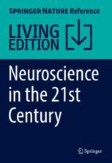Search
Search Results
-
Optic Nerve Crush Injury in Rodents to Study Retinal Ganglion Cell Neuroprotection and Regeneration
Optic nerve crush injury is a useful model for studying the response of central nervous system neurons (CNS) to injury. A particular focus of this...
-
Pedal serotonergic neuron clusters of the pteropod mollusc, Clione limacina, contain two morphological subtypes with different innervation targets
Each pedal ganglion of the pteropod mollusc Clione limacina contains a cluster of serotonin-immunoreactive neurons that have been shown to modulate...

-
Unfolding the ventral nerve center of chaetognaths
BackgroundChaetognaths are a clade of marine worm-like invertebrates with a heavily debated phylogenetic position. Their nervous system superficially...

-
Distributed Visual Systems in Pteriomorphian Bivalves
Pteriomorphia includes bivalves such as scallops, file clams, oysters, mussels, and ark clams. Like other bivalves, pteriomorphians do not have heads...
-
Unique morphology and photoperiodically regulated activity of neurosecretory canopy cells in the pond snail Lymnaea stagnalis
The pond snail Lymnaea stagnalis exhibits clear photoperiodism in egg laying; it lays more eggs in long-day conditions than in medium-day conditions....

-
Ocular Injection Techniques for Retinitis Pigmentosa: Intravitreal, Subretinal, and Suprachoroidal
Ocular gene therapyGene therapies represents an emerging and promising therapeutic approach for the treatment of several of the inherited retinal...
-
Ambient-task combined lighting to regulate autonomic and psychomotor arousal levels without compromising subjective comfort to lighting
BackgroundAlthough evidence of both beneficial and adverse biological effects of lighting has accumulated, biologically favorable lighting often does...

-
Roles of Synaptic Plasticity in Functional Recovery After Brain Injury
Patients with brain injury or stroke suffer from sensory-motor disorder caused by the loss of function of damaged brain tissues. The goal of...
-
Report on the First Symposium on Invertebrate Neuroscience held on 13–17th August 2019 at the Balaton Limnological Institute, MTA Centre for Ecological Research, Tihany, Hungary
This meeting report provides an overview of the oral and poster presentations at the first international symposium for invertebrate neuroscience. The...

-
Electrophysiological Techniques for Studying Tactile Perception in Rats
Neurons communicate by electrical and chemical signals. Neurophysiological studies measuring and manipulating these signals are therefore of utmost...
-
Contribution of Transglutaminase to the Induction and Maintenance of Long-Term Synaptic Potentiation in Neurons in the Common Snail
Previous studies have shown that the neurotransmitter serotonin is required for the successful formation of long-term potentiation in the terrestrial...
-
The Suprachiasmatic Nucleus and the Circadian Timekee** System of the Body
We humans are diurnal – active in the day and asleep at night. Along with this pattern of rest and activity are many other timed processes of which...
-
Visualization of Retinal Blood Vessels
The retina offers a unique opportunity to directly visualize blood vessels in vivo noninvasively. Over the past few decades, several new imaging...
-
Glial cells in the posterior sub-esophageal mass of the brain in Sepia officinalis (Linnaeus, 1758) (decapodiformes–sepiida): ultrastructure and cytochemical studies
Electron microscopy revealed that glial cells in the posterior sub-esophageal mass of the brain in Sepia officinalis had a well-developed rough...

-
Chemical-neuroanatomical organization of peripheral sensory-efferent systems in the pond snail (Lymnaea stagnalis)
Perception and processing of chemical cues are crucial for aquatic gastropods, for proper elaboration of adaptive behavior. The pond snail, Lymnaea...

-
VR for Cognition and Memory
This chapter will provide a review of research into human cognition through the lens of VR-based paradigms for studying memory. Emphasis is placed on...
-
Immediate-Early Genes Detection in the CNS of Terrestrial Snail
In the present work, using in situ hybridization, we studied the expression patterns of three molluscan homologs of vertebrate immediate-early genes C/EBP...

-
Stem Cells and Tissue Engineering-Based Therapeutic Interventions: Promising Strategies to Improve Peripheral Nerve Regeneration
Unlike the central nervous system, the peripheral one has the ability to regenerate itself after injury; however, this natural regeneration process...

-
Activation of Galanin Receptor 1 with M617 Attenuates Neuronal Apoptosis via ERK/GSK-3β/TIP60 Pathway After Subarachnoid Hemorrhage in Rats
Subarachnoid hemorrhage (SAH) is a devastating cerebrovascular disease. Neuronal apoptosis plays an important pathological role in early brain injury...

-
The Suprachiasmatic Nucleus and the Circadian Timekee** System of the Body
We humans are diurnal – active in the day and asleep at night. Along with this pattern of rest and activity are many other timed processes of which...
